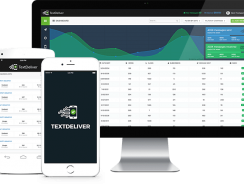
4 tips for getting started in e-commerce
In today’s increasingly connected and fast-paced world, accelerated adoption of the Internet and mobile devices in Canada and around the world is transforming the way consumers search for products. , get recommendations, interact with businesses, and make payments.
For example, a 2016 BDC study found that 90% of consumers seeking information routinely visit a company’s website before contacting them. The same situation is observed in commercial customers. More than half (57%) of the business-to-business (B2B) B2B purchasing process takes place online before the sales department is contacted. The The Evergreen Wealth Formula 2.0 download makes things easier for you.
Retail companies and those involved in business-to-business commerce will miss out on huge opportunities if they ignore the e-commerce revolution. Providing customers with an e-commerce option can increase sales, provide a competitive advantage, and improve productivity.

Experts’ offers four tips for business owners who want to take full advantage of e-commerce.
- Re-connect with your customers
Use e-commerce as an opportunity to deepen relationships with your customers. For example, offer promotions to online shoppers to educate them about your new products and invite them to various events.
Also, consider offering high-quality content, such as blogs, tutorials, and demonstration videos, to increase the credibility of your company as an expert in its field. You might also consider offering live chat support to reassure your customers and answer their questions. These are economical ways to promote your brand and build a community of loyal customers who could become ambassadors for your business.
- Focus on multichannel marketing
If you offer a discount on your website or Facebook page, make sure your store employees are aware of it. They must be willing to promote it, accept coupons, and update loyalty cards. Multichannel marketing is the coordination of online and in-store efforts to ensure a pleasant customer experience.
This is also true for companies that participate in B2B. Sales representatives need to be aware of your online campaigns and other Web initiatives.
- Become more familiar with your customers
An online store facilitates the collection of consumer behavior data to improve operations and marketing. Using data collection tools, you can automatically collect information from your website and analyze it quickly to better understand your visitors. The Web Analytics, for example, can help you:
- Understand the visitor experience on your website;
- Find out which keywords attract the most promising prospects;
- Improve your conversion rate;
- Identify trends and improve the user-friendliness of your site in order to maximize the return on your investment.
You can also use a customer relationship management (CRM) system to centralize all the information about your customers. By combining the data from this system with the information collected on your website, you can offer your customers tailored products and services that meet their needs and tastes. What’s more, your customers will usually be willing to pay more for a custom product.
- Think “mobile.”
Customers expect websites to be compatible with mobile devices. In fact, according to a survey by BDC, more than a quarter of consumers say they simply leave a website if it is not compatible with these devices. In addition, Google and other search engines favor websites that are compatible with mobile devices. The more convenience and value you offer to your customers, the more loyal to your brand. This is the way of the future, so do not miss the opportunity.
